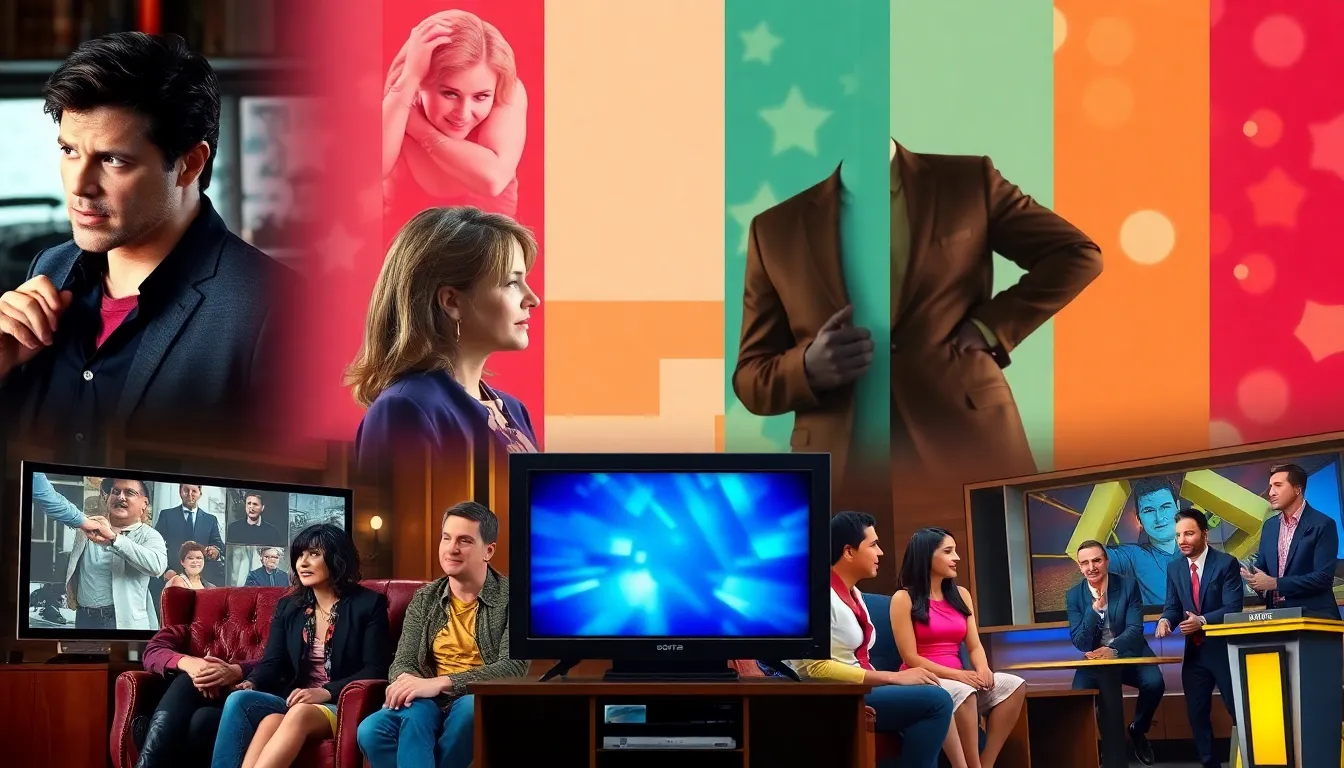Table of Contents
ToggleIn a world where binge-watching has become a competitive sport, TV shows have transformed into the ultimate escape. Whether it’s a gripping drama that keeps viewers on the edge of their seats or a quirky comedy that sparks uncontrollable laughter, there’s something for everyone. Who knew that staring at a screen for hours could feel so rewarding?
From the nostalgic charm of classic sitcoms to the jaw-dropping twists of modern thrillers, TV shows have a unique way of bringing people together. They spark conversations, fuel debates, and sometimes even inspire a few questionable life choices. So grab your popcorn and settle in, because the realm of television is about to take you on a wild ride through unforgettable characters, plot twists, and maybe even a few guilty pleasures you never knew you needed.
Overview of TV Shows
TV shows have transformed into a multifaceted medium for storytelling and entertainment. Genres encompass everything from intense dramas to comedic series, catering to diverse audience preferences. Viewership often shifts toward binge-watching, where completing multiple episodes in one sitting has become a norm.
Characters in these shows resonate with viewers, creating emotional connections that deepen engagement. Such investment leads to conversations about plot developments and character arcs, enriching the viewing experience.
Critical acclaim tends to reward innovative storytelling and production quality. Awards like the Emmys recognize standout performances and achievements in various categories.
Platforms now host a mix of traditional network programming and streaming service exclusives. As a result, on-demand access expands choices for viewers, allowing them to curate their viewing experiences.
Ratings and metrics often highlight the popularity of specific genres or shows. Dramas like “Breaking Bad” captivate audiences with intricate narratives, while comedies like “The Office” provide lighthearted escapes.
Cultural impact is significant, as themes and characters often reflect or challenge societal norms. Shows like “Black Mirror” provoke thought and discussion on technology’s role in daily life.
Overall, the landscape of TV shows continues to evolve, shaped by audience demands and creative innovation. Engaging elements abound, from plot twists to character development, inviting audiences to participate in meaningful viewing experiences.
Popular Genres of TV Shows

Diverse genres in television cater to various tastes. Each genre offers unique storytelling methods that engage audiences differently.
Drama Series
Drama series captivate viewers with intense narratives and complex characters. These shows often delve into human emotions and moral dilemmas. High-stakes situations keep audiences on the edge of their seats, generating discussions about plot developments. Examples include “Breaking Bad,” which explores the transformation of a high school teacher into a drug kingpin. Critics frequently praise drama series for their depth and attention to character development, underscoring their role in promoting impactful storytelling.
Comedy Series
Comedy series provide lighthearted entertainment, using humor to address everyday situations. Characters often bring laughter through witty dialogue and relatable scenarios. Shows like “The Office” and “Parks and Recreation” have become staples in popular culture, appealing to broad audiences. The best comedy series often create memorable catchphrases and iconic moments that resonate long after the credits roll. Through humor, these series help audiences unwind and enjoy shared experiences.
Reality Shows
Reality shows bring real-life drama and unscripted moments into living rooms. Participants face challenges and conflicts, offering viewers a glimpse into their lives. Shows like “Survivor” and “The Bachelor” generate significant viewer engagement through interpersonal dynamics and competition. The format fosters a sense of investment in contestants’ journeys, driving audience discussions and social media buzz. Reality TV often reflects societal trends and personal stories, contributing to its enduring popularity.
Impact of TV Shows
TV shows significantly influence culture and society, shaping perspectives and conversations among viewers. They reflect and challenge societal norms, often prompting discourse on various issues.
Cultural Influence
TV shows serve as cultural touchstones, impacting fads, fashion, and language. Iconic series create trends that resonate with audiences, embedding themselves in everyday life. Shows like “Friends” popularized phrases and styles, influencing youth culture and social dynamics. Cultural references from shows often emerge in conversations, demonstrating their lasting imprint. Characters from diverse backgrounds foster empathy, helping audiences understand different perspectives. When shows highlight cultural milestones, entertainment transitions into education, encouraging viewers to engage with and celebrate diversity.
Social Issues Addressed
Television consistently addresses pressing social issues. Many programs tackle themes like mental health, gender equality, and racial injustice, inviting viewers to reflect on their realities. Series such as “This Is Us” portray the complexities of family dynamics, resonating emotionally with viewers. Addressing systemic problems helps create awareness, pushing audiences to consider solutions. Reality shows, too, often bring attention to societal issues, incorporating real-life dynamics that reflect contemporary challenges. By shining a light on these topics, TV shows foster discussions that extend beyond the screen and into daily life.
The Evolution of TV Shows
Television has transformed significantly over the years, evolving from traditional broadcasting to modern streaming platforms. Viewers experience a broader array of content than ever before.
From Traditional Broadcasting to Streaming
Traditional broadcasting relied on scheduled programming, limiting viewer choices. Streaming services like Netflix and Hulu revolutionized this model by offering on-demand access. With instant gratification becoming essential, viewers can binge-watch entire seasons at their convenience. The rise of binge-worthy series has redefined viewing habits, allowing deeper engagement with story arcs and characters. Audiences now embrace platforms that cater to niche genres and diverse narratives, further enriching the television landscape.
Changes in Audience Consumption
Shifts in audience consumption drastically changed how television content is consumed. Linear viewing has declined, while customizable viewing experiences take center stage. Viewers engage with content through various devices, blending television with smartphones and tablets. Data shows that the average adult spends over four hours a day consuming video content, illustrating the importance of engaging shows. Social media discussions often accompany viewings, fostering community and interaction among fans. Ultimately, these shifts create opportunities for innovative storytelling, appealing to a diverse range of tastes and preferences.
The world of TV shows is a dynamic and ever-evolving landscape that continues to captivate audiences. With a diverse array of genres and compelling storytelling, these shows not only entertain but also foster connections among viewers. As on-demand access reshapes how people consume content, the communal experience of watching and discussing favorite series remains strong.
TV shows serve as cultural mirrors reflecting societal issues and trends, sparking important conversations that resonate beyond the screen. As creativity flourishes and viewer preferences shift, the future of television promises even more engaging narratives and memorable characters, ensuring that this beloved medium will remain a significant part of modern entertainment.





